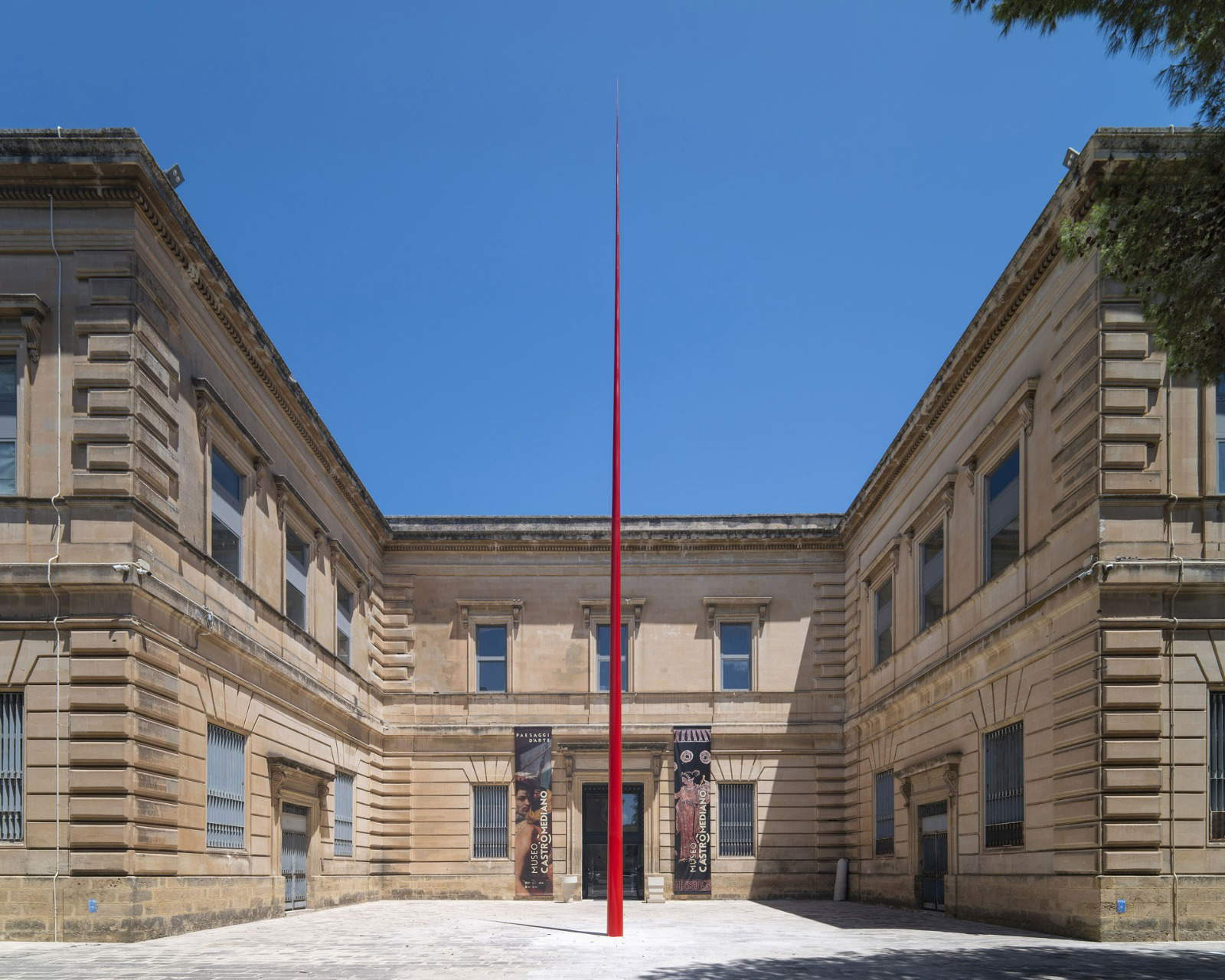A Modern Prometheus. Costas Varotsos on display in Lecce
From June 29, 2024 to January 15, 2025, the works of the great Greek artist Costas Varotsos (Athens, 1955) are on display in Puglia, and to be precise at the Sigismondo Castromediano Museum in Lecce, where the exhibition Elpís is being held. Prometheus or the Shattered Dream of Europe. This project is the only one in Puglia approved for the 2022-2023 season through the Ministry of Culture’s Contemporary Art Plan (PAC). The exhibition itinerary is dedicated to the mythological figure of Prometheus, famous for stealing the sacred fire from Zeus. The itinerary, conceived and coordinated by the Sigismondo Castromediano Museum with the support of the Apulia Region, the Department of Tourism, Cultural Economy and Territorial Enhancement and the Teatro Pubblico Pugliese, is also sponsored by the Municipality of Lecce, the Province of Lecce, the University of Salento, the Department of Cultural Heritage of the University of Bari and the Fine Arts Academy of Lecce.
The exhibition explores the artist’s disillusionment with a humanity that has failed to value the gift of fire, a symbol of knowledge and technique. Elpís, the personification of hope according to Hesiod, is the last gift left in Pandora’s box. Despite human corruption and greed, Varotsos sees in Elpís the spark of hope for humanity’s future, a metaphor for art as a glimmer in the darkness of contemporaneity.
Costas Varotsos returns to Apulia more than a decade after his intervention in Otranto on the wreck of the Albanian patrol boat Katër i Radës, with the work The Landing. Work to Migrant Humanity, dedicated to the theme of migration. This new project is made possible thanks to a longstanding collaboration between Varotsos and curators Giusi Giaracuni, Luigi De Luca, director of the Lecce biblio-museum pole, who will also be in charge of the catalog and coordination of the site-specific works. The scientific committee includes Flavia Frisone, professor of Greek history at the University of Salento; Lorenzo Madaro, professor of contemporary art history at the Brera Academy of Fine Arts in Milan; Brizia Minerva, art historian at the Castromediano Museum in Lecce; and Annalucia Tempesta, head of the archaeological section of the Castromediano Museum.
The central theme of the project is the link between the area’s historical and archaeological heritage and contemporary art. The exhibition includes works from Varotsos’ collection, conceived since the 1980s, and two new site-specific installations for the Castromediano Museum, Puglia’s oldest cultural institution, known for its exhibition programming that connects ancient and contemporary. Among the works on display, Prometheus, made of glass, a powerful and fragile material, and Elpís, represented by a long red spear, evoke profound symbolism. Other works such as Globe, Europe, Labyrinth, Black Venus, Blows, and Dialogue dialogue with Castromediano’s landscapes, updating their historical and mythological content.
“In an age when truth is always another and the destabilization of values creates confusion and fear,” says Varotsos, “everyone looks up expecting a solution out of nowhere. Prometheus tries to bring people back to the truth and the basic values of human existence. But our world has lost touch with the real world, it now lives in the past or the future and has lost the sense of the present time. Every era of human history has had its Prometheus in the form of expectation, hope, urgency. Contemporary man has lost the sense of expectation and hope and is unable even to see the fire that Prometheus stole from Jupiter to save humanity. Today there is an urgent need to recover the meaning of that fire and to give visible form to Elpís.”
Born in Athens in 1955, Costas Varotsos studied at the Academy of Fine Arts in Rome and the Faculty of Architecture in Pescara. After returning to Greece in 1982, he created works of international significance. Among his most famous creations are The Poet in Cyprus and The Runner in Athens. Varotsos received a Fulbright Grant from New York in 1990, and in 1999 he was appointed Professor at Aristotle University of Thessaloniki.
In addition to being a member of the Engelberg Academy in Switzerland, Varotsos has created numerous works in Italy and abroad, characterized by their connection to the natural environment and osmosis with space, using materials such as glass, iron and stone. Significant works in Italy include La Morgia in Gessopalena (Abruzzo), Il Poeta in Casacalenda (Molise) and Energy at the Chianti Sculpture Park (Tuscany). In the United States, he created Contiguous Currents in Palm Beach, Florida. In Switzerland, he created Tension Energy in Lucerne, while La Totalità is on display in Turin.
Varotsos has participated in prestigious international exhibitions, including the Venice Biennale (1993, 1995, 1999) and Documenta in Kassel (2017). In 2014, the President of the Italian Republic awarded him the title of Cavaliere della Repubblica for his contribution to the Italian arts, and in 2017 he received the medal of Commendatore dell’Ordine al Merito from the President of the Republic of Greece.
 |
| A Modern Prometheus. Costas Varotsos on display in Lecce |
Warning: the translation into English of the original Italian article was created using automatic tools. We undertake to review all articles, but we do not guarantee the total absence of inaccuracies in the translation due to the program. You can find the original by clicking on the ITA button. If you find any mistake,please contact us.




























